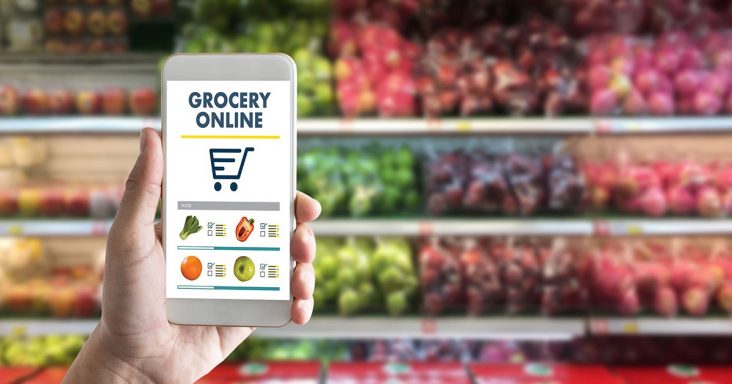Online grocery sales rise 21% in March; Walmart tops in market share
by April 9, 2025 11:57 am 1,732 views

U.S. consumers continue to purchase more groceries and consumables online, with online grocery sales rising 21% in March from a year ago. The $9.7 billion in total sales is not adjusted for inflation, and remains elevated from pre-pandemic years.
Walmart tops all other retailers for online grocery sales with 25.7% of the total market share. Amazon has 22% of the share, and Instacart, which works with dozens of retailers like Aldi, has 21.6% of the share. Kroger has about 9%, and Albertsons has 3.4% according to e-Marketer.
The Brick Meets Click Grocery Shopping Survey, sponsored by Mercatus, found that consumers remain loyal to delivery, with that segment’s sales rising 30% amid an expanding monthly user base.
“Delivery’s remarkable year-over-year rebound highlights the potency of promotional strategies that help customers save more money,” said David Bishop, partner at Brick Meets Click. “And, memberships/subscriptions are becoming essential for retaining customers and driving more recurring revenue via gains in order frequency and average order values.”
The latest monthly performance gains for online grocery sales reflect aggressive promotions and deep discounts on annual memberships and/or subscriptions that began around May 2024, according to the report. The promotions have been offered by a broad range of grocery retailers, including mass retailers like Walmart, supermarkets, and third-party providers like Instacart who have benefits that include free delivery.
March 2025 also marked five years since the COVID-19 pandemic began, which altered how U.S. households purchased their groceries, noted the survey report.
Online grocery sales for delivery totaled $4.2 billion in March, up from $2.5 billion, up 68% over the past five years. Online grocery sales for store pickup totaled $3.8 billion in March, up 58.3% from $2.4 billion when the pandemic started in March 2020. Ship-to-home online grocery orders totaled $1.8 billion in March, rising 12.5% from $1.6 billion five years ago, according to the report.
The report indicated that in August 2019, online grocery rang up $2 billion in monthly sales in the U.S. Then seven months later, in March 2020, online grocery sales skyrocketed to $6.5 billion, a more than 200% increase. This initial surge accounted for about 60% of the total gains for e-grocery since the pandemic. After peaking in early 2021, total e-grocery sales rebalanced through mid-2024, contributing another 20% of overall gains. More recently, there has been another 20% in gains driven by the uptick in subscriptions and memberships promotions, with March 2025 representing the 8th consecutive month of sales of over $9.5 billion, the report notes.
The report notes that while the pandemic motivated more households to try online grocery shopping, the share of consumers who now regularly shop for groceries online has risen from 25% to 57% over the past five years. The report also found that consumers are shopping more often, with 2.6 average online grocery orders per month, up from an average of two orders per month during the pandemic.
“Retailers that elevate the experience with relevant offers and meaningful rewards won’t just meet shoppers’ evolving needs – they’ll build stronger connections that fuel long-term growth,” said Mark Fairhurst, chief growth marketing officer at Mercatus.
